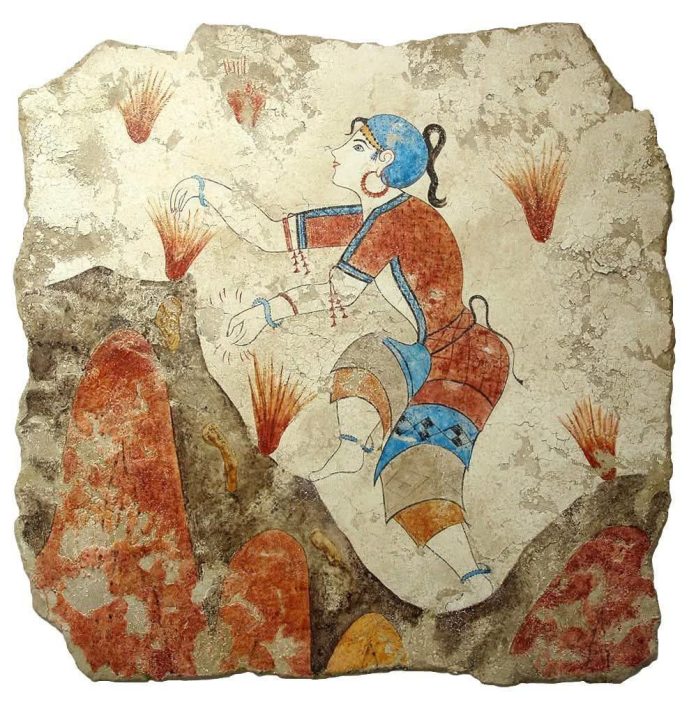Saffron Gatherers Fresco – A Glimpse into Ancient Aegean Life
The Saffron Gatherers Fresco is a remarkable piece of Minoan art from around 1600 BCE, discovered at the ancient settlement of Akrotiri on the island of Santorini (ancient Thera) in Greece. This site was buried under volcanic ash during a massive eruption, which preserved the frescoes and buildings in extraordinary condition for over 3,500 years.
Volcanic Eruption & Preservation
Around 1600 BCE, a powerful volcanic eruption destroyed the city of Akrotiri. However, the thick layers of ash acted as a natural preservative, protecting the colorful frescoes from decay. This made Akrotiri one of the most important archaeological sites for understanding Bronze Age Aegean civilizations.
Fresco Description
The fresco portrays two young women—likely priestesses—gathering saffron threads from crocus flowers in a rocky, mountainous landscape. One woman bends to pick flowers, while the other collects them in a basket. A monkey, possibly symbolizing sacred or exotic animals, also appears in the scene—highlighting the connection between nature, animals, and ritual life in Minoan culture.
Importance of Saffron
In ancient Minoan society, saffron was highly prized for:
Medicinal purposes (especially for menstrual relief and healing),
Religious rituals and offerings,
Cosmetics and perfumes.
Its careful collection and depiction in religious or ceremonial attire reflect both its economic and spiritual significance.
Role of Women in Minoan Culture
This fresco also highlights the high status of women in Minoan society. Their prominent roles in ritual and symbolic activities, along with their detailed dress and adornments, suggest that women were not just domestic figures, but central to religious and cultural life.
This ancient fresco is not merely an artwork—it’s a cultural time capsule, revealing how natural resources, spirituality, and gender roles intertwined in the Bronze Age Aegean world.
Sources
- Doumas, Christos G.
Akrotiri, Thera: The Excavations of a Bronze Age City.
Athens: Society for the Promotion of Studies on Prehistoric Thera, 1999. - Marinatos, Nanno.
Minoan Religion: Ritual, Image, and Symbol.
Columbia, SC: University of South Carolina Press, 1993. - Fitton, J. Lesley.
Minoans.
London: British Museum Press, 2002. - The Thera Foundation – Official website for Akrotiri excavation projects.

